How to Have the World Offer Itself
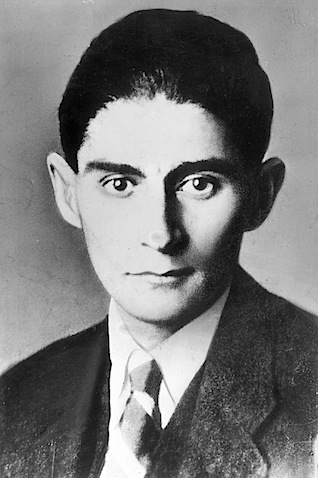
“You do not even have to leave your room. Remain sitting at your table and listen. Do not even listen, simply wait. Do not even wait, be still and solitary. The world will freely offer itself to you to be unmasked, it has not choice, it will roll in ecstasy at your feet.”
–Franz Kafka (Czech Writer, 1883-1924)
God Is Communicating In Every Moment
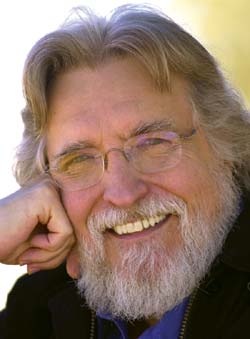
“Everyone IS having conversations with God, all the time….God is communicating with humanity in every moment.”
–Neale Donald Walsch (American Writer, 1943-)

“Tomorrow’s God: Our Greatest Spiritual Challenge” (Neale Donald Walsch)
Two Eyes and One Tongue
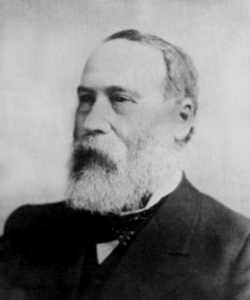
I was just advising someone to remember the old adage about having one tongue and two ears. To listen twice as much as you speak…
This one also works!
“Men are born with two eyes, but with one tongue, in order that they should see twice as much as they say.”
–Charles Caleb Colton (English Clergyman and Author, c.1780-1832)
Listening For the Truth
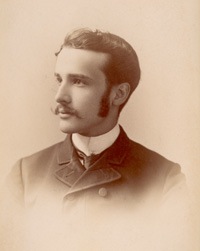
“The world is dying for want, not of good preaching, but of good hearing.”
–George Dana Boardman (American Baptist Minister, 1801-1831)
Active Listening
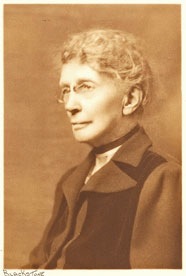
“A man who listens because he has nothing to say can hardly be a source of inspiration. The only listening that counts is that of the talker who alternately absorbs and expresses ideas.”
–Agnes Repplier (American Essayist and Social Critic, 1858-1950)

Awaken Your Divine Nature

“Of course you have work to do in this world. Your first job is to awaken your own divine nature. You can do that by putting yourself into inspirational circumstances and looking within and waiting in receptive silence for answers from within.”
–“Peace Pilgrim” (a.k.a. Mildred Norman, American Peace Activist, 1908-1981)
Steps Toward Knowledge of the One
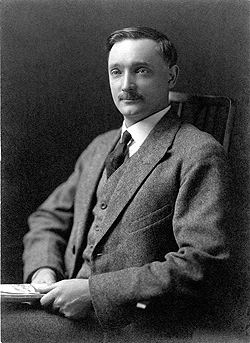
“The three mental steps towards knowledge of the One Reality are:
1. Listening
2. Reflecting
3. Contemplating
Listening means paying attention to the statements of the Scriptures with reference to the One Reality, and also to the words of seers and sages on the subject.”
–Ernest E. Wood (English Theosophist, Yoga Practitioner, Translator, Author and Professor of Physics, Principal and President of the Sind National College and the Madanapalle College, India, 1883-1965)

Cluster Headache

There are dozens of types of headache, but one of the most serious and debilitating is called “cluster headache.”
It is a very severe headaches of a piercing quality that most often occurs near one eye or temple. The pain typically lasts for fifteen minutes to three hours. The headaches are usually
unilateral and occasionally change sides.
It is difficult to overstate the severity of the pain. I once mentioned that I could always tell if there was someone in the clinic experiencing a cluster headache because everyone could hear him banging his head against the wall to try and get some relief. They may also be described as “suicide headaches:” a reference to the
excruciating pain and resulting desperation that has culminated in
actual suicide.
There are some odd symptoms that may accompany the headache, such as:
- Stuffy or runny nose in the nostril on the affected side of the face
- Red, flushed face again on the side of the headache
- Swelling around the eye on the affected side of the face
- Reduced pupil size
- Drooping eyelid
As the name implies, cluster headache usually comes in clusters that last for a week or two or as long as two months. In about 10-15% of people they are chronic. The periodicity of the clusters is remarkable and has lead many of us to speculate an involvement of the brain’s “biological clock” or circadian rhythm. In an observational study we found that clusters were more likely to begin in the month of birth of the sufferer, though we never knew how much to read into this.
Cluster headache is far more common in tall men: most are over six feet tall. When we first described cluster headache in women in the early 1980s it was a rarity, though more women have been getting cluster headache in recent years: we have no idea why. Some years ago we also described that they were more common in men who smoked heavily and drove more than 15,000 miles each year. It was impossible to say whether the smoking was cause or effect. Cluster headache is, along with diabetes and multiple sclerosis, an illness that becomes more common in peple who live far from the equator.
We and others also found that nitrates could trigger episodes in some people: that first came to light when we saw three men who used them during sex.
Cluster headaches are most likely to be due to an abnormality in the hypothalamus, which could explain why cluster headaches frequently strike around the
same time each day, and during a particular season, since one of the
functions the hypothalamus performs is regulation of the biological clock and the metabolic abnormalities that have been reported in some patients.
During the onset of a cluster headache, the most rapid abortive treatment is the inhalation of pure oxygen (12-15 litres per minute in a non-rebreathing apparatus). When used at the onset of headache this can abort the attack in as little as 5
minutes. Once an attack is at its peak, using oxygen therapy appears to
have little effect. Alternative first-line treatment is subcutaneous
administration of triptansumatriptan and zolmitriptan. Because of the rapid onset of an attack, the triptan drugs are usually taken by subcutaneous injection
rather than by mouth. While available as a nasal spray, it had been thought that the spray would not be effective to sufferers of cluster headache due to the swelling
of the nasal passages during an attack. However new research from London has shown that 5-mg and 10-mg doses of zolmitriptan intranasal spray are effective within 30 minutes and well tolerated in the treatment of acute cluster headache.
Lidocaine (or any topical anesthetic) sprayed into the nasal cavity may relieve or stop the pain, normally in just a few minutes, but long term use is not suggested due to
the side effects and possible damage to the nose and sinuses.
Previously vaso-constrictors such as ergot
compounds were also used though less so now becuase of their side effects and new options being available. Oddly enough some sufferers report a similar relief by
taking strong cups of coffee immediately at the onset of an attack.
Many different types of prophylaxis have been tried, with lithium, the calcium channel blocker verapamil at a dose of at least 240mg daily, and the anticonvulsant topiramate.
Now a new report in the journal Neurology suggests that 22 out of 26 people with cluster headache who used psilocybin reported that the drg aborted their attacks. 25 of 48 psilocybin users and 7 of 8 LSD users reported cluster period termination; 18 of 19 psilocybin users and 4 of 5 LSD users reported remission period extension. The authors conclude that research on the effects of psilocybin and LSD on cluster headache may be warranted.
From what we do understand about the pathogenesis of cluster headache it is not difficult to see how psilocybin and LSD may help. But it did worry me that this report might lead to people self-medicating with hallucinogens without any kind of support or guidance.
That being said, this recent report shows once again the importance of listening to what people have to say: they often have the answers inside of them. And those answers may lead to a new range of treatments.
Clarity of Communication
One of the major reasons for the failure of relationships or of businesses is a failure to communicate clearly. There are also powerful reasons for thinking that much ill health is rooted in “blockages:” inadequate communication between your body, your mind, your emotions, subtle systems and spirituality.
Any communication consists of ten essential components:
- The integrity and mental state of the sender
- The intent of the sender
- The expectation of the sender
- The information
- The medium
- The context
- The receiver
- The mental state of the receiver
- The reaction or response of the receiver
- The meta-text and meta-communication of the exchange
Naturally, in a healthy communication, everyone involved takes turns being the sender and the receiver, and this interaction between you creates the overall message. I must be very clear that I’m not just talking about verbal communication, but also physical and intimate interactions, business and family discourses.
I’d also like to take the whole notion of communication a step further: meaningful communication needs for us to be consciously aware of the interaction, and we should see it not just as an exchange of information, but of energy. A charismatic individual may communicate a lot more than mere words and his or her impact may last long after the words have been forgotten. On the other hand, there is actually a technical term – phatic communion – for empty language that is purely used for social lubrication: “How are you?” “You’re welcome,” “Have a nice day.”
It really is important to be aware of all of these components of communication. A problem in any one of them can make a mess of any attempt for people to connect. Too often I see people think only of the sender, the message and the recipient, without realizing that it is the other aspects of communication that are the keys to success or failure. This is often very important in therapy: people may ruminate on something said to them, when they should be considering the context of whatever was said.
Meta-text and meta-communication refer to the whole spectrum of other components of our interactions that stretch beyond the message itself. These include the types of language that we use as well as prosodic cues. And if people are in close proximity, body language and gesture. You may well know that it is possible to tell a great deal about someone’s intentions by studying changes in the tone of their facial muscles, changes in the color of their skin and the directions I which they move their eyes when speaking. How we use certain words to fill in our communication can be as important as the main body of a communication. Something that we do all the time is to try to understand the underlying meaning or meta-text, that is often quite different form the actual words being spoken.
Whether dealing with an individual in therapy or a business that wants to perform better, there is a series of critical questions that will uncover communication problems:
- Do you have any communication problems?
- Who is responsible for it?
- Is there a disconnection between the mental state of any message sender and the message itself?
- Does the sender have a clear purpose in communicating?
- Are people able to understand the sender? (T.E. Lawrence (of Arabia fame) was said to have one of the largest vocabularies at the University of Oxford. So large that many people didn’t have a clue what he was talking about!)
- Is information being communicated appropriately?
- Is the environment conducive to communication?
- What is interfering with communication?
- How long has this been a problem?
- Why has the problem not been solved?
If there is a communication problem, consider starting from scratch:
- Any communication contains information and energy: are they both clear and pure?
- Is there congruence between what is being communicated and the intent of the communicator?
- Is there a culture of integrity in communications?
- Are people striving for the greater good or personal aggrandizement?
- What people, policies or procedures are interfering with communication?
- How are communications becoming degraded?
- What and who’s emotions are interfering with the informatyion and the energy of any communications?
- What might lead to the misunderstanding of a message?
- What systems are in place to ensure that communications are being received and understood correctly?
- What system of questioning is in place?
Once we understand each of the phases of communication, and that it is a dynamic exchange of energy and not just information transfer. And that ANY message or communication is subject to degradation, and that there are ways to check for and correct it, you are well on your way to abolishing many of the problems that can wreck relationships, capsize companies and ruin a therapeutic alliance.
“Once a human being has arrived on this earth, communication is the largest single factor determining what kinds of relationships he makes with others and what happens to him in the world about him.”
— Virginia Satir (American Family Therapist, 1916-1988)
“Skill in the art of communication is crucial to a leader’s success. He can accomplish nothing unless he can communicate effectively.”
— Norman Allen (American Playwright, Recipient of a Charles MacArthur Award for Outstanding New Play)
“A world community can exist only with world communication, which means something more than extensive shortwave facilities scattered about the globe. It means common understanding, a common tradition, common ideas, and common ideals.”
–Robert M. Hutchins (American Educator, and, from 1929-1945, President of the University of Chicago, 1899-1977)
Gender, Culture and Communication
Regular readers will know that I’m very interested in gender differences. More and more evidence is confirming what most of us have always known: men and women tend to think and behave differently. Some of the differences are clearly neurological and some social. It is sometimes difficult to sort out which is more important: some research findings on gender differences have produced mixed results because of some of the assumptions of male investigators!
But notice that I emphasize the word “tend” to think differently. We are always dealing with statistical differences. My Y-chromosome should enable me to navigate from A to B without difficulty. In fact, I am seriously directionally challenged: I should probably have a GPS system with me when I go down to the shops!
I have spoken about my admiration for the work of Deborah Tannen, and I have also written about Christina Robb’s marvelous book, in which she charts the development of new insights into gender differences in psychology.
This weekend I was at the annual meeting of the National Speakers Association in Orlando, and I learned something very interesting that fits in with all of our previous discussions. I learned it from one of the speakers, named Julia Hubbel. I already knew that women tend to be more relational in their interactions and men are more transactional. Most women tend to spend a lot more time on the maintenance and development of relationships and most men are more interested in the bottom line: What is the solution? What’s the deal going to be? What I did not know is that there is some data to indicate that non-White males tend also to emphasize relationships over transaction. As soon as I heard that, I was sure that it was right: I have had a lot of dealings with people from the Indian subcontinent, and most would consider it very rude to get straight down to business before we had taken tea or eaten something while discussing family and other personal matters. Julia teaches networking skills that integrate gender and ethnic considerations.
As she was explaining her insights and methods, I was reminded of the work of the anthropologist and cross-cultural researcher Edward T. Hall, who wrote a series of excellent books on cultural factors and thought.
Gender and cultural differences in communication are of such importance that I plan to return to the topic in the near future. In the meantime, you might be interested in a book by Richard Nisbett, entitled The Geography of Thought: How Asians and Westerners Think Differently and Why. After multiple trips to Japan, during which I learned a lot about cultural differences, I gave a copy to a friend who is a Canadian in a senior management position in the Japanese affiliate of a US-based company. He told me that he was astonished by the accuracy of the insights.
Some of the political misunderstandings that you see on the news every morning are often a consequence of different thinking styles. Learning how men and women and people in different cultures think and operate is not just interesting.
It is essential.
“Skill in the art of communication is crucial to a leader’s success. He can accomplish nothing unless he can communicate effectively.”
— Norman Allen (American Playwright, Recipient of a Charles MacArthur Award for Outstanding New Play)
Technorati tags: Communication Gender differences Deborah Tannen Cross-cultural communication







